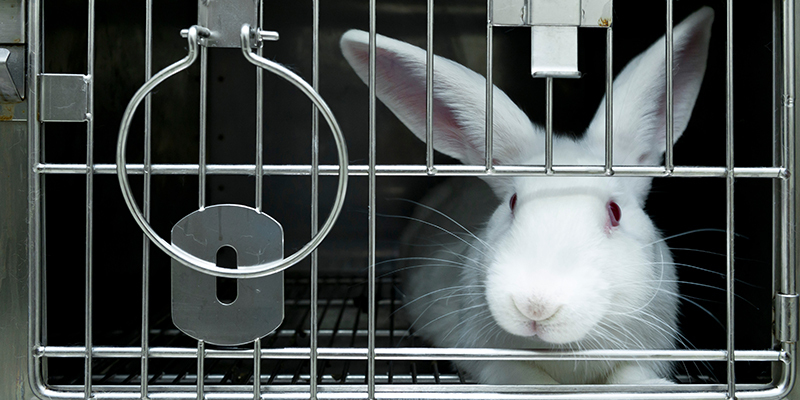

More than 300,000 animals used illegally by French laboratories between 2015 and 2020
The new report by the European Union on the figures on animal testing in 2019 has just come out. Like the previous, it reports on the use of experiments for which alternatives have existed for more than ten years. And as usual, France has a leading role in these illegal uses. One Voice has obtained a document from the Ministry of Research, thanks to which we can count more than 300,000 illegal uses from data from 2015 to 2020! We have just written to the Ministry of Research to ask for an explanation.
All in all, more than 250,000 animals have thus been used illegally in France between 2015 and 2019, while lobbies and ministries kept bragging to us about the regulations and the strict obligation to use existing alternatives. Adding in the data from 2020, available in a file obtained on request from the Ministry of Research by One Voice, it reached more than 300,000 illegal uses.
Between 2015 and 2019 within the European Union, France was responsible:
- for almost 40% of pyrogen tests (measuring the onset of fever by a substance injected into rabbits), while alternative methods have been recorded in the European Pharmacopoeia since 2009;
- for more than a third of skin and eye corrosion and irritation tests on rodents, rabbits, and pigs, while alternative methods were approved by the European Agency responsible for their validation (ECVAM) in the 2000s;
- for 95% of uses of rodents to produce monoclonal antibodies using the painful ascites method, while since 1998, ECVAM maintains that “the production of monoclonal antibodies using the ascites method is no longer necessary, except in certain exceptional cases”.
The European Directive on the use of animals for scientific purposes nevertheless envisages that once an alternative that does not use living animals exists, it must be used. Would animal testing laboratories therefore be exempt from respecting the law? Even if we put aside the legal aspect of these uses, it is difficult to explain how France has doubled its use of rabbits for pyrogen tests while their global usage in the EU has gone down by a third. Or how the idea that monoclonal antibodies being requested “in very large quantities” by the industry can justify using a cruel method in place of the alternatives available.
Faced with a lack of action from the authorities responsible for implementing regulations, we can easily understand the public’s mistrust.
In a letter addressed to the Ministry of Research, we are asking for explanations on the reasons for these illegal uses, on the penalties expected for the responsible establishments, and on the measures implemented to ensure that no projects are accepted from now on that use animals while alternatives exist.
Translated from the French by Joely Justice